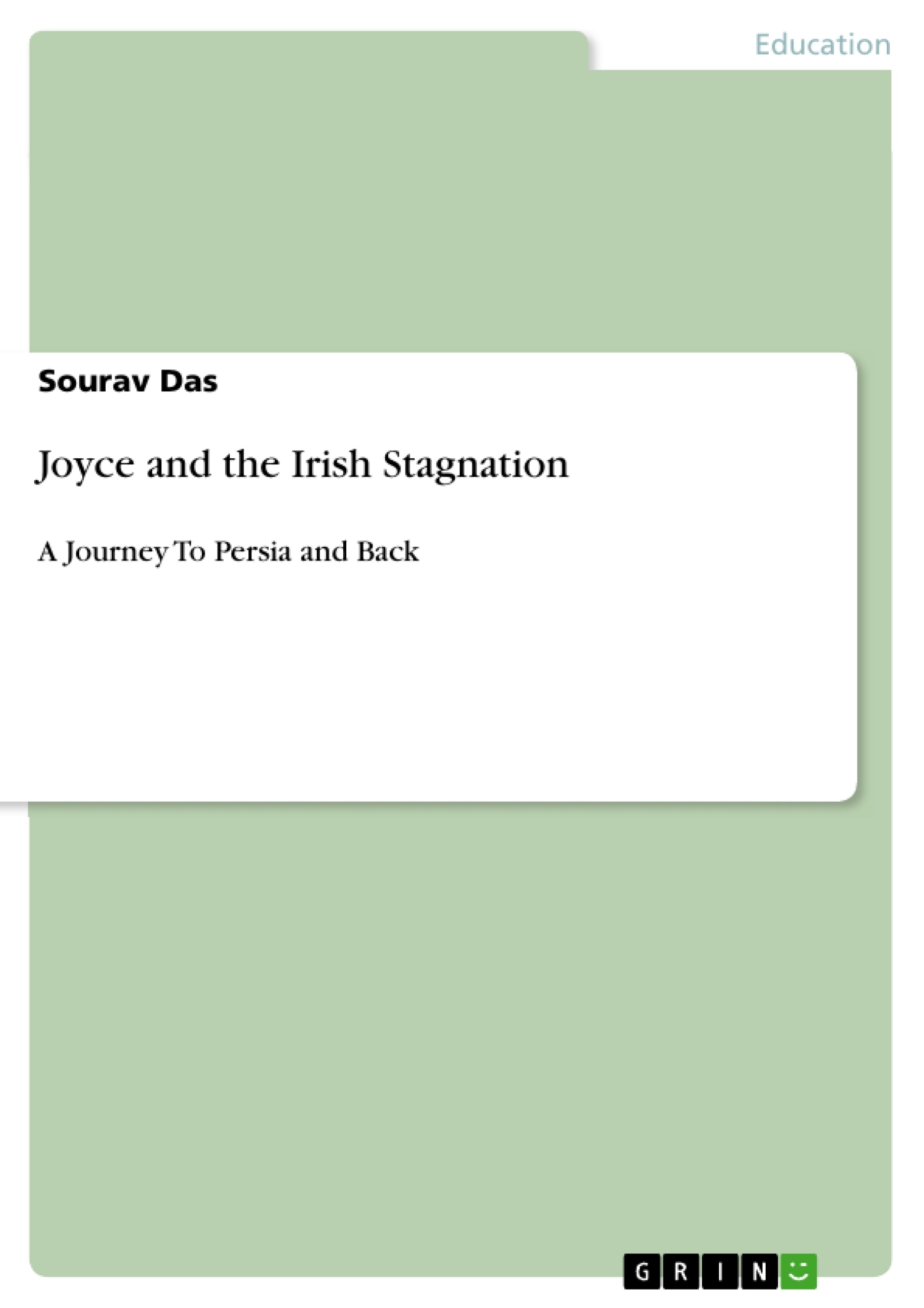Irish scholarship and writing is very sensitive when it comes to the issue of the of English Colonization, colonial forces, independence and the matter of the Post-Colonial. In fact a very Irish consciousness is present in almost all the prose works, poems and dramas of this nation, and all writers in this trend, di-rectly or by implication have sought to portray these matters through their works.
The paper will endeavour to delve into that consciousness of acclaimed Irish writer James Joyce which attempts to create an alternative cultural identity different from the English by orientalising the Irish sensibilities and moulding it as an opposition to English Imperialism. Borrowing heavily from the theories of Edward Said, and from Edward Soja, Bill Ashcroft et al, the paper will look to illustrate how Joyce “writes back” to the Empire trying to destabilize the colonial culture; yet his identification with the Orient as a Romantic Refuge contrastively crumbles into a place of degeneration, despair and depravity pinpointing James Joyce the—‘The European’s’—ambivalence towards the matter of the Orient: as the boy in Araby is made to realise that escapist fascination is a vain attempt. Focussing on the dissolution of Irish Orientalism into English-French Orientalism, I shall attempt to show how Joyce strove to but failed in transforming Dark Rosaleen into a Gaelic Madonna.
Inhaltsverzeichnis (Table of Contents)
- The Irish Situation
- The "Paralysis"
- In looking towards the East..
- Irish Orientalism..
- The "Lush" East
- A further Answerable Question ..
- The East-ing of the West..
- Fusing the East into the West
- The Irish Orientalist link.
- "Orientalism": The project of Edward Said
- The Fall of the East.
- The Ambivalence......
Zielsetzung und Themenschwerpunkte (Objectives and Key Themes)
This paper explores James Joyce's attempt to create an alternative cultural identity for Ireland, distinct from English influence, by drawing upon Eastern imagery and sensibilities. Through the lens of Edward Said's "Orientalism," the paper analyzes Joyce's use of the Orient as a means of "writing back" to the British Empire and destabilizing colonial culture. It examines the complex and ambivalent relationship between Irish and English Orientalism, ultimately concluding that Joyce's attempt to construct a Gaelic Madonna was ultimately unsuccessful.
- Irish cultural identity in the context of English colonization
- The role of Orientalism in shaping Irish identity
- James Joyce's use of the Orient as a means of "writing back" to the Empire
- The limitations and complexities of Irish Orientalism
- Joyce's ambivalent relationship with the Orient
Zusammenfassung der Kapitel (Chapter Summaries)
- The Irish Situation: This chapter introduces the historical and cultural context of Ireland in the late 19th and early 20th centuries, emphasizing the complex relationship between Ireland and England. It defines the concept of "paralysis" as a dominant theme in Joycean writing, highlighting the sense of stagnation and cultural numbness that permeated Irish society. This paralysis is attributed to English imperialism and the influence of English culture on Irish life.
- In looking towards the East..: This chapter explores Joyce's use of the Orient as a means of escaping the paralysis of Irish society. It introduces the concept of Irish Orientalism, arguing that Joyce used Eastern imagery and themes to create a sense of alternative cultural identity. The chapter explores how Joyce saw the Orient as a "lush" and vibrant escape from the constraints of Irish and English culture.
- The East-ing of the West..: This chapter delves deeper into Joyce's exploration of the East, examining how he fused Eastern themes with Western culture. It explores the interconnectedness of Irish and English Orientalism, highlighting the complex ways in which both cultures were shaped by their interactions with the Orient.
- "Orientalism": The project of Edward Said: This chapter introduces Edward Said's influential work on Orientalism, providing theoretical framework for understanding how the Orient is constructed and used in Western literature. It examines how Said's concept of "Orientalism" can be applied to Joyce's work.
- The Fall of the East.: This chapter explores the limitations and complexities of Joyce's use of the Orient. It examines how his initial fascination with the East ultimately crumbles into disillusionment and despair.
- The Ambivalence......: This chapter concludes the analysis by exploring the ambivalent relationship Joyce had with the Orient. It examines the internal contradictions of his use of the Orient as a means of creating a distinct Irish identity.
Schlüsselwörter (Keywords)
This paper centers on the themes of Irish cultural identity, colonialism, Orientalism, and the work of James Joyce. It focuses specifically on the concept of "paralysis" in Joycean writing, exploring how it relates to the historical and cultural context of Ireland and the use of the Orient as a means of escaping this paralysis. The paper also draws heavily upon the theories of Edward Said, Bill Ashcroft, and Edward Soja to analyze Joyce's engagement with "Orientalism" and its implications for understanding Irish identity.
- Citation du texte
- Sourav Das (Auteur), 2016, Joyce and the Irish Stagnation, Munich, GRIN Verlag, https://www.grin.com/document/412741



